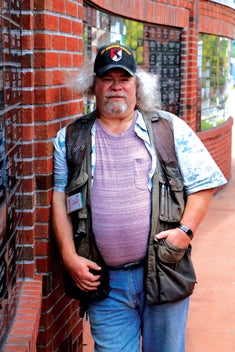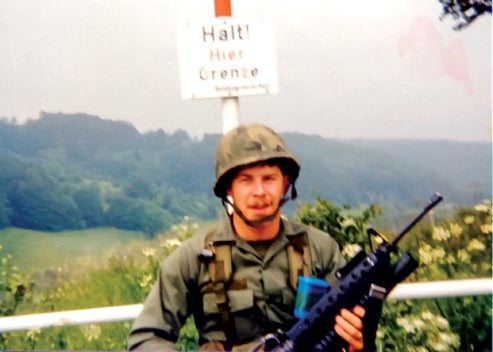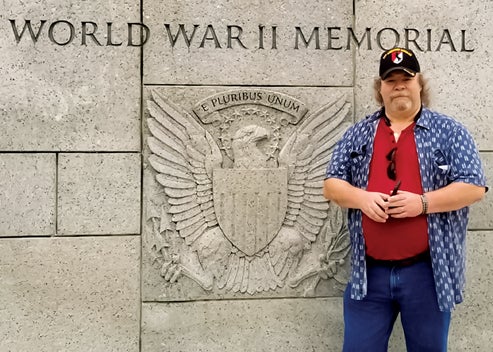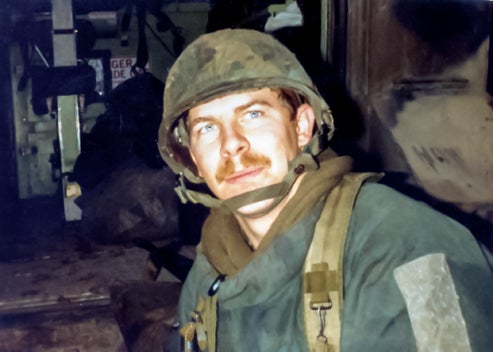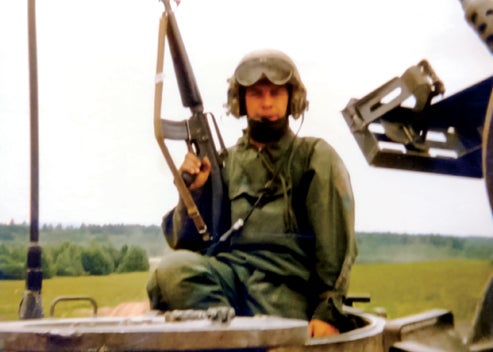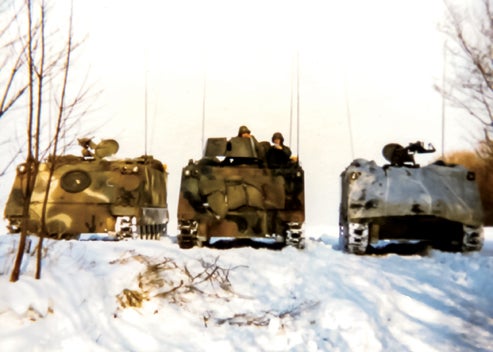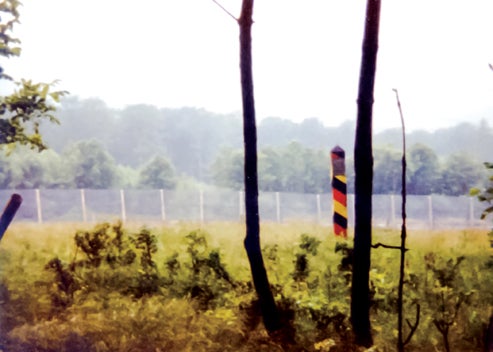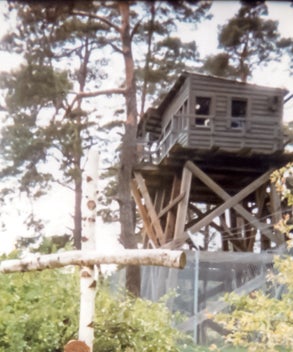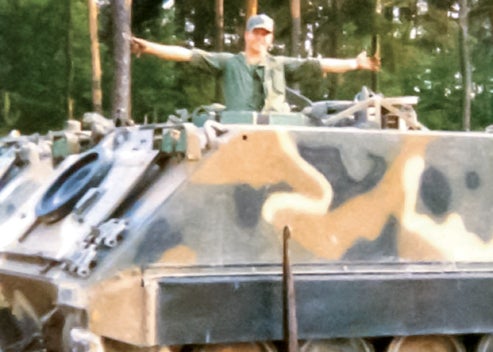An unlikely military start… Souders shares how communication journey in military did a 180
Published 12:45 pm Friday, June 26, 2020
1 of 9
|
Getting your Trinity Audio player ready...
|
BY IVAN SANDERS
STAR STAFF
ivan.sanders@elizabethton.com
Not everyone’s life journey begins like the path they currently follow in today’s world. Many aspire to do something different with their life but sometimes the paths get twisted and turned and sometimes it takes traveling one path to reveal what the future holds.
For Elizabethton Star Photographer Larry N. Souders, what started out seeking a career in communications soon transformed into a stint in the military that enlightened the eyes of the young Souders that charted his course in the field of photography after his military career came to an end.
Souders traveled a path that was walked by his uncle and father along with five of his six siblings, all of whom spent time serving in the United States armed forces.
“I come from a family of service members,” said Souders. “I had an uncle that served in World War II and my father was a Navy vet from the Korean War. Like a lot of veterans of that era, they didn’t talk a lot about it but you knew that they had done it.
“I looked at the military while I was in high school and decided that wasn’t the path I wanted to go down. I had gone to work for AMC (America Multi-Cinema) and thought that was going to be a career path for me.
“I met my first wife in college and we married about a year later,” continued Souders. “This would be early 1980 and the economy was tanking thanks to the resident in the White House and the Arab Oil Embargo and other stuff.
“She was pregnant with our first child and I could not find a job anywhere in Kingsport. I had no desire to work for Eastman, the Mead, or the Press. Factory jobs didn’t appeal to me.”
Even though he might have just been shooting some early photos, Souders at the time didn’t realize the doors that would be opened up to him after his military time had come to an end and would set the early tone for his military time.
“I was a budding photographer. I had been a photographer for my yearbook staff from seventh grade forward all the way through — two middle schools and all three years in high school at three different high schools as my parents divorced while I was in high school.
“I said to myself that I would look into communications in the service.”
Souders did his due diligence in research each branch looking to fulfill his desire to learn communications in the service. Each stop had varying results and when he did find the one he wanted to commit to, it turned out to be completely different than what Souders would ever imagine.
“I talked to a Navy guy and he didn’t have much to offer,” stated Souders. “The Air Force I didn’t know enough about but if I went into the Air Force, I wanted to fly. The only problem was I wore glasses and to fly you have to have very good vision.
“I talked to the recruiter in the Army and he was good. He was a good salesman and I told him what I wanted to do. I wanted to get into communications and possibly grow as a photographer.
“He said they had this MOS (Military Occupational Specialty) 13-Fox,” Souders continued. “He said that I would be doing a lot of communicating in that MOS and I was like ‘Okay cool, sign me up.’
“I found out real quickly that wasn’t what it was. In February of 1980, I left and went down to Knoxville and processed in and swore my allegiance to the country and was shipped immediately to Fort Sill, Oklahoma, which is home of all the artillery. It’s where all the artillery people go to train.”
Souders soon found out the communications that he envisioned did truly evolve into a communication platform, but the platform turned into being able to call in coordinates for the artillery to shot at.
“13-Fox is a fire-support specialist,” said Souders. “They called us The Fist and our job was to coordinate troop movement, gunfire, Naval gunfire, Air Force target acquisition and strafing runs, and bombing, and basically we were the guys who sit upon the hill and said shoot that way.
“I did my basic at Fort Sill and I did my AIT and left there in July of 1980. It was an interesting job and I really grew to love it.”
After completion of his advanced training, Souders would soon find himself a part of the 11th Armored Cavalry, 1st Regiment.
The 11th Armored Cavalry Regiment (ACR) is called The Blackhorse Regiment with the 1st known as Ironhorse.
The motto on the unit insignia is “Allons,” which means “Let’s Go” in French.
Souders was assigned to the Howitzer Battery (HWB or How Bat) Artillery also known as the RedLegs and work with Charlie Troop.
“I got my soul duty station because I was going to bring my wife along and I ended up with the 11th Armored Cavalry, 1st Regiment in Fulda, Germany. We were quite literally the front line of defense in the Cold War,” Souders reminisced.
“Any invasion going East to West or West to East goes through the Fulda Gap and our job was to be blockers in case of a Soviet invasion to keep the Russians from advancing to the Rhine and Rhone Rivers, to Frankfurt, to any place West of the border — the Iron Curtain.
“I spent three years there and the first year I was pretty much there by myself because to get my wife and daughter together to make that move did not happen real quickly. She did not actually arrive in-country until almost six months after I had been there.”
Basically all alone and counting down the days until his family arrived, Souders focused on his military duty by working in the field where he spent 310 days out of the first 365 days serving after arriving in-country.
“I spent a lot of time in the field in support of the 8th Artillery, the second of the air defense artillery, and the forward observers which are parts of The Fist team on top of going out with our artillery unit. We were also assigned to one of the different troops who were garrisoned together — Alpha, Bravo, Charlie, and Tango which is the four troops,” stated Souders.
“On top of supporting each individual troop we were assigned to, there was something called REFORGER (Return of Forces Europe or Return of Forces Germany).
“If the war started, we trained with units that would actually airlift into Germany like it was the real thing and we would go to war.”
Just like riding a bike, doing the type of work Souders was doing required many hours of practice at one of two practice zones in Germany — Grafenwoehr Training Area aka Graf Hohenfels or Wildflecken aka Wild Chicken.
It was during this time that Souders discovered that it was just peashooters they were dealing with.
“For practice, we went to live-fire areas like Grafenwoehr and Wildflecken,” Souders said. “I also spent in my three years there about six months on the Iron Curtain border. I been there and saw that.
“It was interesting times because it was the height of the Cold War. (Ronald) Reagan had just been elected and peace through strength — they were starting to build up the military forces.
“The Navy got the brunt of it because Carter had kind of decimated the Navy because they had mothballed the ships so they started to bring them back out.
“We started getting new weaponry and new ways of communication — new ways of calling and asking for artillery fire and mortar fire, coordinating with the Air Force. We didn’t do much with the Navy because where we were was 250 miles from the North Sea which was probably the closest water to where I was.”
Souders got to witness first hand how the A-10 Warthog played such an impressive role in helping the United States and their allies win the first Gulf War relatively easy.
“I saw some awesome displays of firepower. In Grafenwoehr, it’s almost a bowl. Mountains are all around it and then there is this flat plain that is easily 20 to 30 square miles,” recalled Souders.
“You went there to practice for calling in artillery and one of the coolest things was when we got to call in the A-10’s, the Warthogs probably most known from the Gulf War on the Highway of Death.
“You would actually be in communication with the pilots. Once the Air Force liaison handed it off to us we were in direct communications with the pilot as to what we were looking at, what we were wanting him to do, and then we would bring him in and tell him now was the time to do what we asked.
“A-10’s fly very low and that is one fantastic airplane,” Souders continued.”They are designed with four redundancies for every system on the aircraft and the pilot sits in a titanium tub to protect from ground fire.
“You would see them come around and go low and then do this pop-up maneuver where they would pop up 300 or 400 hundred feet and layover and put the aircraft on a knife’s edge, acquire the target, and then level out and then you would hear this crazy sound and whatever was in front of that aircraft disappears.
“It’s a 40mm Gatlin gun that fires at a sustained rate of 3,000 rounds per minute and it fires a one-pound depleted Uranium slug about four inches long and an inch to an inch and a half in diameter and it will turn a tank into Swiss cheese.”
Souders, like many others before him and those that followed, developed a strong bond with those that he served with in the military. Those friendships have survived over the years and more are made daily with others who served with the 11th Armored Cavalry unit.
“It was really cool. I made some really, really good friends. Some of whom I am still in contact with today,” Souders commented.
“Through Facebook, I have met several people who have been in my unit before I got there, while I was there, and since I have left.
“The 11th Armored Cavalry left Germany in 1990 and they went to the first Gulf War. After the victory there, they packed it up and went to Fort Ord in California where they are the red flag unit. In other words, they are the training unit so that anybody comes in learning to fight desert warfare, comes in and the 11th Armored Cavalry mimics being Russian troops.”
Souders left Germany in August of 1983 after he and his first wife separated and then divorced. With his child being back home, Souders had been considering the thought of re-enlisting or coming home to take care of his child.
The 6,000-mile difference between him and his child won out and he received a Compassionate Discharge to come home and take care of his child.
Although he didn’t get to do the communications that he envisioned, Souders was honored to have a couple of his images be published by the military publication Stars and Stripes which Souders considered to be a high honor.
Souders realizes a lot has changed since his time in the service but he also knows that many other things have changed as well.
“Training has changed dramatically since what I had to do,” Souders said. “Combat skills are done more at the squad level (6 to 12 guys). When I went in, it was all strategic. I went to Germany and our job was to stop the invading Red Hoard — the Russians.
“Discipline as far as an individual’s personal discipline has gotten stronger. I am proud of our military. They kick butt and take names in doing their job and do it well. The military’s job is to break things and win wars.
“I am not one for regime change stuff, but if you turn our military loose and let them do their job that they are trained for, they will win every single time. We are the best trained, best equipped, best-backed military on this planet bar none.”
Souders went on to describe a moment during his service along the Iron Curtain that he remembers like it just happened. He said the event makes him appreciate the freedom he has as an American today.
“We face a different foe now than during my timeframe,” Souders recollected. “I was on the border once and our job was to watch them watch us and I can close my eyes to this day and it has been nearly 40 years and a Soviet officer and two East Germany enlisted came out of a tower that was about 400 meters West and to our South, came to the fence, came through the fence, stayed on their side of the border which a lot of people don’t understand — the Iron Curtain that was not the border.
“The actual border was about 50 meters West. There was a no-man’s land — personnel mines, anti-tank ditches, and vehicle obstructions between the Iron Curtain as we know in our age group and where the actual border was,” Souders continued.
“These three people came through the fence and there is a path that has been walked who knows how many years and we had an observation tower and we are up in it and are watching them.
“One of the East Germany guys is taking photos of us while I am taking photos of them. Where we were standing taking photos of each other, it was literally three steps to their right and one step forward and they were free. Any East German who stepped onto the West Germany side was granted asylum and citizenship — there were no questions.
“And to this very day, I can see the three of them turn around and walk back,” Souders continued. “The kid that saw that didn’t understand, but I do today because they probably had family somewhere across the border in East Germany that would have been punished if they had made that step into freedom.
“That is probably the time that sticks in my mind the most. It was literally five feet to freedom. I think our people take our freedom for granted, do not understand or appreciate what our military or law enforcement and the jobs each one of them performs.”
Since returning to the states, Souders began his photography journey in 1990 when he went to work for Allen Frost at Coleman’s Studios. That love and passion for shooting behind a lens have kept Souders on his professional path to this day.
Many have seen his work in the Star where he continues to shoot news and sports.


